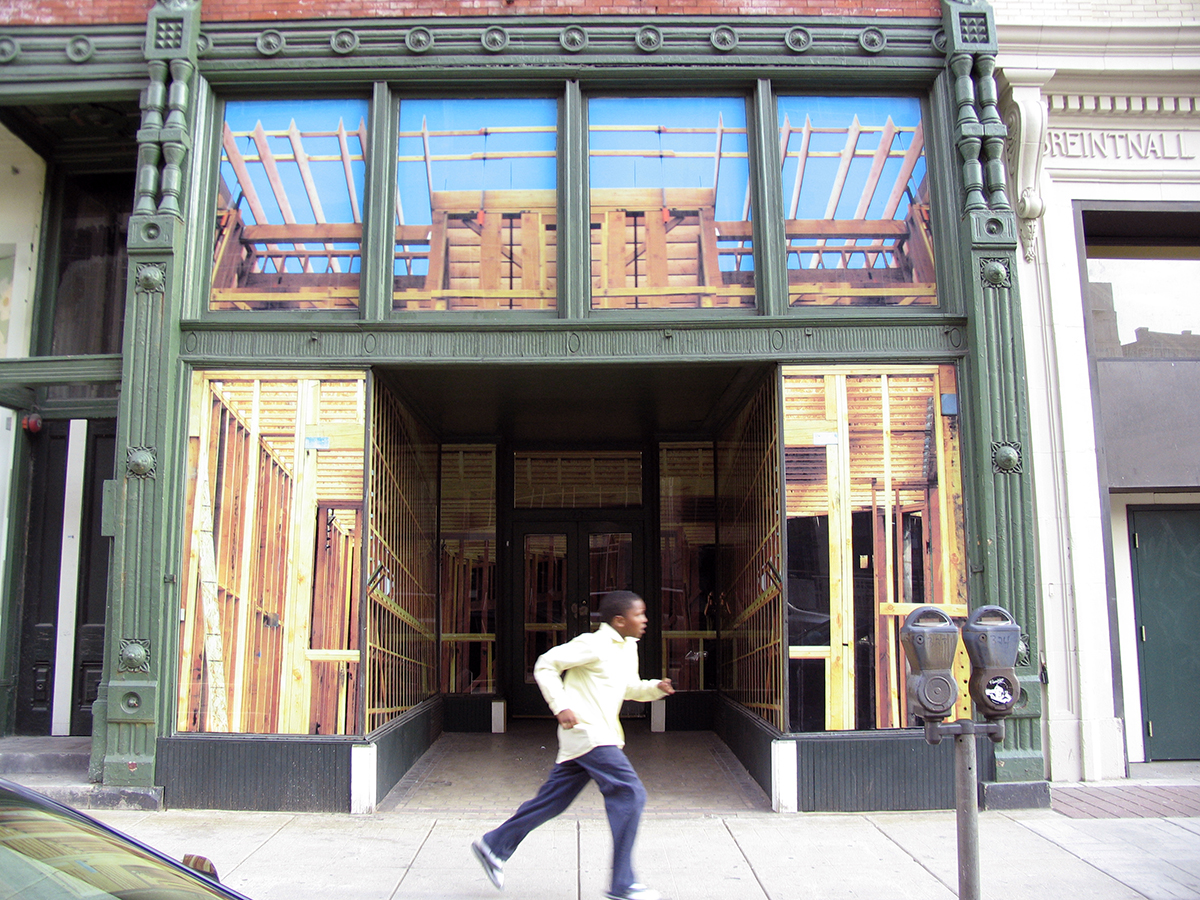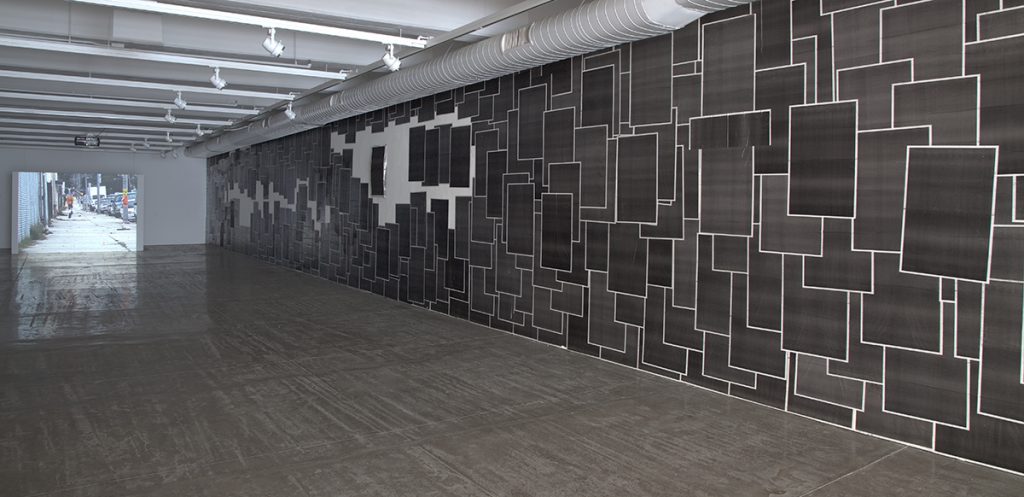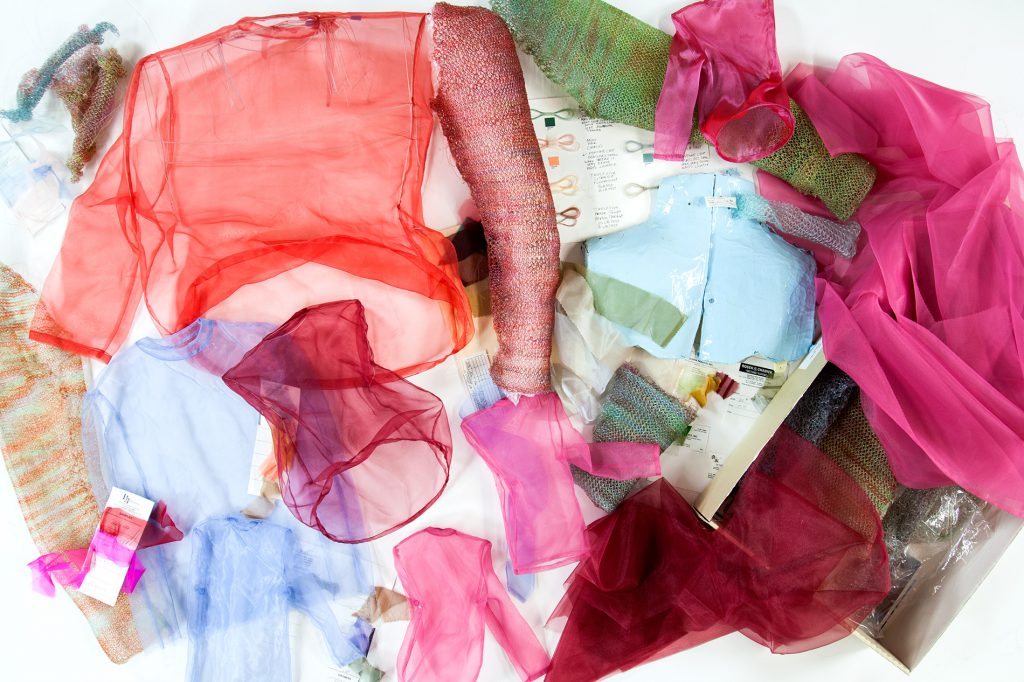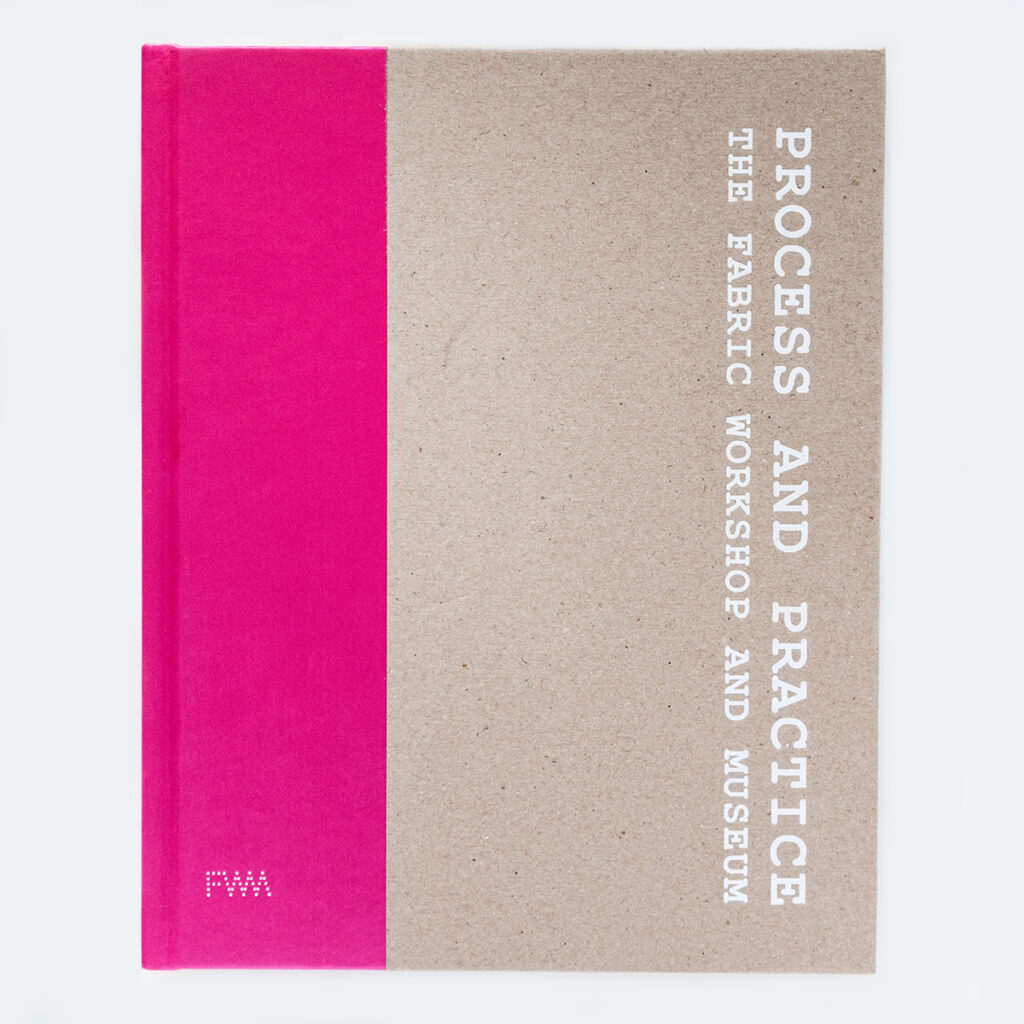Mark Bradford creates paintings that recall modernist style but which are grounded in the materials of his local urban environment: South-Central L.A. His work is primarily based on notions of ethnicity and beauty as defined by the community of his youth. Bradford experiments with materials drawn from local beauty salons and other local businesses and hangouts that hold significant meaning to the South-Central social scene.
For his 2007 residency, Bradford has proposed collaborating with FWM to create his first large-scale sculptural piece. Mark Bradford and artist Carlos Avendaño were inspired by a new city, Philadelphia, to create Storefront, which is the third collaboration between the two artists. The work is a comment on the urban experience as well as a part of the city at a fundamental level: street level. Both artists are interested in exploring the factors that shape the urban landscape including the “informal economy” (the economy that consists of the unregulated transactions that are common among those who work in the service industry, including hairstylists). They see the urban landscape as a place full of messages, some of which are meant to be read by the general public and others that are coded and intended for a specific audience. Storefront is intended, in the artists’ own words, “to create a faux reality… which bleeds into the reality of urban space” allowing the viewer to reflect on “the increasingly rapid ways in which public space is constantly being designed, defined, erased, and built again.”
In his 2012 FWM exhibition, Geppetto, Bradford debuted a new, multimedia wall installation. The resulting abstract work—composed of 2,000 solid black “cancellation” newsprint pages—spanned the length of FWM’s gallery wall, providing an immersive, psychological experience for the viewer. Geppetto served as a continuation of themes found in Bradford’s 2010 piece Pinocchio Is on Fire. In that work, Bradford conceptually interwove narratives of the iconic childhood character, Pinocchio, the puppet who dreams of becoming a real boy. His installation at FWM shared its name with Pinocchio’s father Geppetto, suggesting a new consideration of that paternalistic role.



